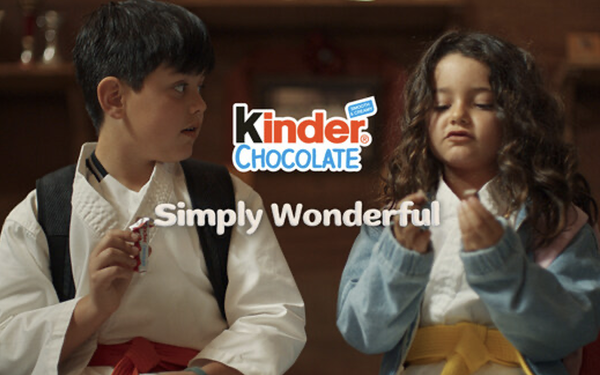
Kinder Chocolate, the sweet European staple
known for its milk chocolate coating and creamy milky center, just launched “Simply Wonderful,” its first dedicated U.S. campaign since entering the market in 2023. With a short film
called “Cowboys” and a social series dubbed “Wonderful Bites,” the effort turns to children’s imaginations to
explain what makes the brand so yummy.
Mattia Ballauco, senior brand manager for Kinder Chocolate at the Ferrero Group, spoke with CPG Insider about adapting the global brand for
American families, navigating nostalgia gaps, and why simplicity is the key ingredient.
advertisement
advertisement
Interview has been edited for length and clarity.
CPG Insider: You introduced
Kinder Chocolate here in 2023. But this is your first big brand campaign. Why the wait?
Mattia Ballauco: When we first launched Kinder Chocolate in the U.S., we supported it with
awareness-building activities, but “Simply Wonderful” is our first fully dedicated campaign here. This product is the heart of the Kinder brand —it first launched in 1968, and our
founder developed it specifically for kids. It’s a unique product with this creamy milky filling and smooth chocolate coating. We wanted to introduce it to American families in a way that truly
reflects its values: imagination, simplicity, and joy.
CPG Insider: Tell me about the creative. Why lean so hard into kids’ perspectives?
Ballauco: This is a
product made for kids. These are little bars made for little hands. That was the original design thinking. And we love the work Anomaly, our agency, did to highlight that. In “Cowboys,”
you see kids explaining how the milk comes from “the nicest cows” and the chocolate from a magical river. It’s imaginative but rooted in product truth.
The “Wonderful
Bites” social series goes even further—real kids giving their own spontaneous answers about where they think Kinder Chocolate comes from. You hear everything from clouds to mermaid
power.
CPG Insider: Is that imagination-first approach a departure from how Kinder advertises in other countries?
Ballauco: In Europe and many other markets, Kinder
Chocolate already has deep emotional connections with parents who grew up with the brand. In the U.S., we’re still building that. But parents everywhere want the same thing: simple joy for their
kids. That’s what this campaign aims to deliver.
CPG Insider: There’s a lot of noise surrounding the snack category in the U.S. right now: better-for-you reformulations,
sugar scrutiny, even school bans. How do you position Kinder Chocolate amid all that?
Ballauco: We’re very clear. Kinder Chocolate is candy. We don’t position it as
“better for you.” But it’s made with simple, recognizable ingredients. There’s no complicated claim. The filling is creamy, the chocolate is smooth. Simplicity, to us, is part
of what makes it feel good to share.
CPG Insider: How do American parents respond to the brand versus those in long-established Kinder markets?
Ballauco: They may not
have nostalgia for it yet, but the reaction is very positive. The product stands out—it’s creamy, unique, and portioned for kids. We’re starting to see more brand recognition. Over
time, that emotional connection will grow, just as in other countries.
This isn’t our first launch in the U.S. We have already launched Kinder Joy and Kinder Bueno in the U.S., and
it certainly won’t be the last. Our brand recognition will grow.

CPG Insider: Who do you see as your closest
competition?
Ballauco: In this specific segment—milk chocolate bars—our biggest competitor is Hershey’s. Kinder Bueno is different, targeting young adults, and has
different competitors, including KitKat. But for Kinder Chocolate, we’re focused on families with young kids, and Hershey’s is the most direct comparison.
CPG Insider: What
are the campaign’s goals?
Ballauco: We’ll be tracking awareness, but household penetration and trial are also very important. If this campaign increases trial and
recognition, we’ll consider it a success.
CPG Insider: Any surprising consumer insights from your research or focus groups?
Ballauco: What’s always fun is
seeing how much adults love it, too. Parents, grandparents, aunties—they may buy it for their kids, but they end up eating it themselves.